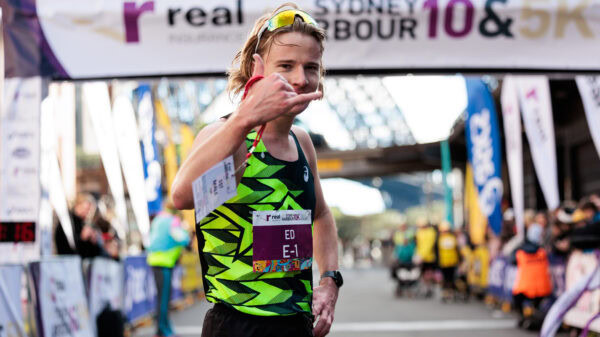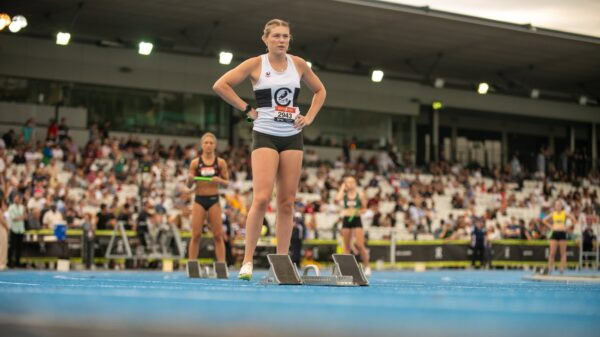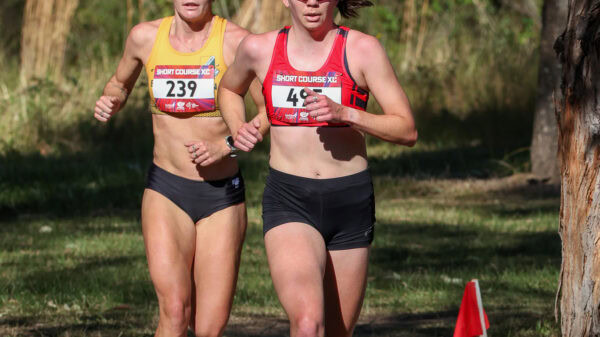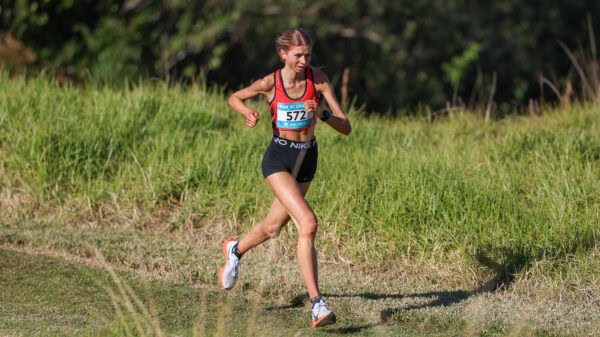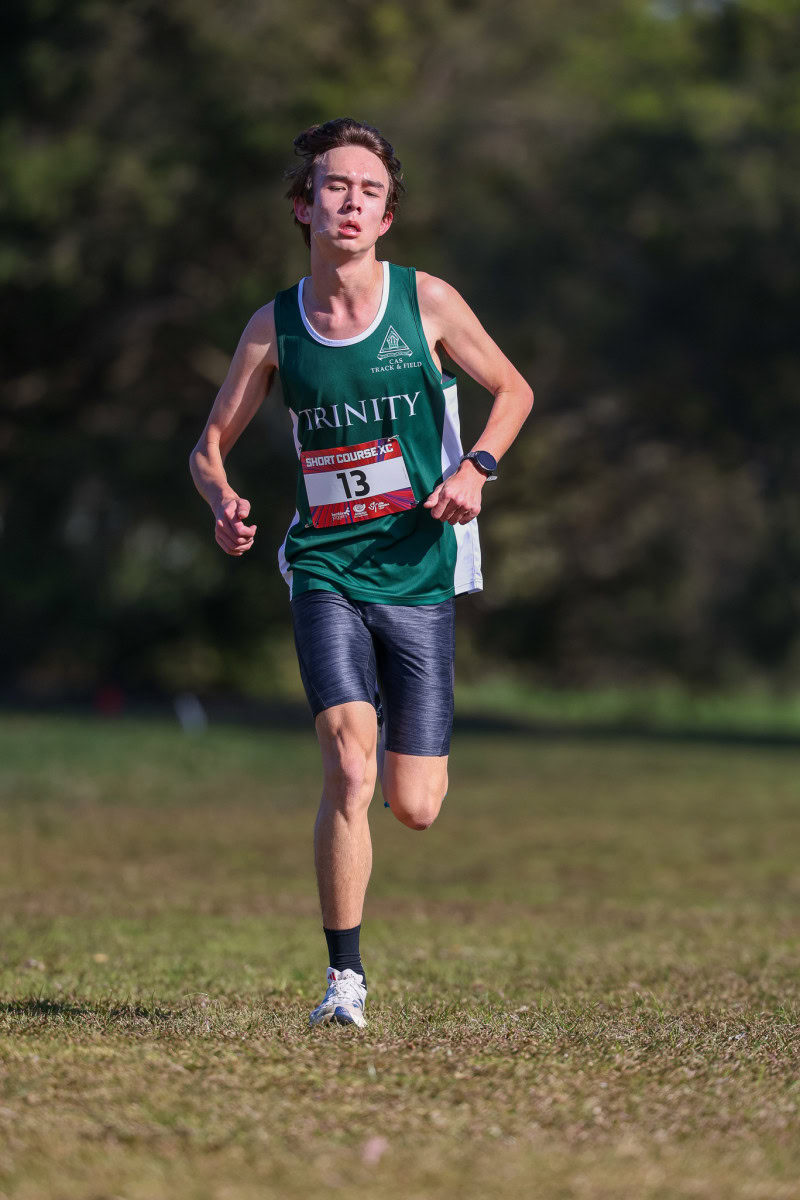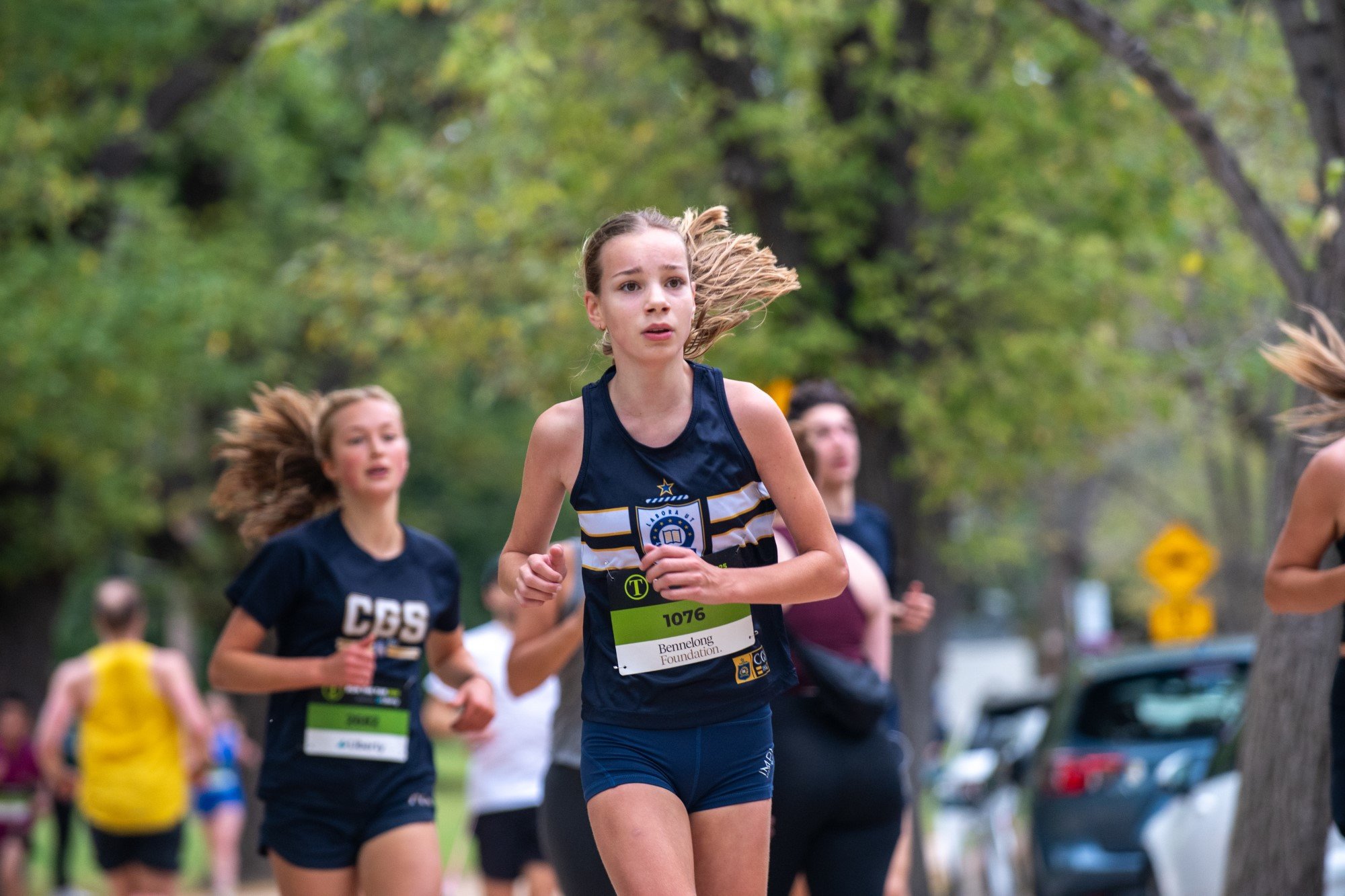The National Sports Tribunal found flaws in Athletics Australia’s selection process in Lisa Weightman’s successful appeal.
Cover photo of Lisa Weightman in action at the 2023 World Championships where she finished 16th in the marathon. Photo by Fred Etter.
What happened?
- Weightman launched her appeal to the National Sports Tribunal (NST) last month when she wasn’t one of the three athletes nominated for Olympic selection in the marathon.
- Weightman won her appeal and the selection was then referred back to Athletics Australia (AA) for reconsideration, who maintained their original selection of Sinead Diver, Genevieve Gregson and Jessica Stenson.
- Weightman chose not to appeal the matter further, to the Court of Arbitration for Sport, and the Australian Olympic Committee ultimately announced the selection of Diver, Gregson and Stenson on Monday.
The NST 12-page decision was published on their website yesterday (Tuesday) afternoon.
What was the appeal about?
Weightman appealed her non-selection on two separate grounds:
- That the selection policy had not been followed; and
- That the selection decision made was unreasonable.
What did the NST decide?
The NST found that AA had not followed the selection policy, and referred the marathon team selection back to AA for reconsideration.
With that decision made on the first matter, the NST did not need to consider Weightman’s second’s claim regarding the unreasonableness of the decision made.
The sole arbiter for the NST determined that AA had not followed the selection policy for two reasons:
- A failure to provide reasons to Weightman on why she was not nominated for selection (which is one of the first steps required in the appeals process); and
- The failure to adopt a process for identifying athletes who had won quota places and then determining if other qualified athletes should be substituted for them.
AA had an obligation to provide written reasons to Weightman why she was not selected within 24 hours of her raising the selection dispute. The NST found that AA’s response to Weighman “did not in fact contain any reasons at all.” AA’s correspondence to Weightman only quoted part of the selection criteria and listed which athletes had been nominated.
Weightman only learned of AA’s reasons for her non-selection in documents submitted by AA to the NST for the appeal. AA materially amended this documentation during the process which the NST found “indicates some uncertainty or lack of clarity in respect of the real reasons of the Selection Committee, particularly when coupled with the failure to provide reasons as required by the By Law.” As a result, the NST declined to accept AA’s submission as evidence.
The NST decision also provides a long exposition of the complicated interplay between three key documents, being:
- World Athletics’ Olympic Qualification Criteria
- Athletics Australia’s Nomination Criteria
- Australian Olympic Committee’s Selection Criteria
Ultimately the NST determined the correct process from these documents for Athletics Australia’s selectors to follow is:
- First, to identify those athletes who achieved quota places (in this case, three athletes).
- Then identify any other athletes who qualified because they met the “entry standards” (in this case three other athletes).
- Having done that, AA’s selectors should then apply the criteria in clause 6.3(a) [the clause that sets out the discretion to be exercised] to determine which of all of the qualified athletes should be nominated to fill the quota places.
The NST found “the absence of any evidence of the specific application, or even awareness, of the process for identifying athletes whose performance attracted quota places, subsequently identifying other qualified athletes, and determining if other qualified athletes should be substituted for those athletes who obtained a quota place.“
What was the result of the NST decision?
Under the Australian Olympic Committee Selection Policy the NST only had the power to refer the selection decision back to AA. It indicated that it was desirable that a fresh nomination panel be established, if feasible, but couldn’t make orders to that effect: it’s something that wasn’t canvassed in the hearing and full consideration of the possibility or implications couldn’t occur. “It is, however, obviously desirable as a matter of fairness if circumstances allow,” the decision reads. Weightman claims that a fresh selection committee was not established.
While the NST did not need to consider the reasonableness of the selection decision it did note that “it is inherently preferable for those with knowledge and experience in athletics, including marathon, to assess athletes’ performances and other matters relevant to athlete nomination pursuant to the Nomination Criteria. It would be appropriate for the Selection Committee that makes the fresh nomination decision to consider and take into account the submissions made by the Applicant [Lisa Weightman] and by Ms Stenson.“

What happened next?
AA nominated Sinead Diver, Genevieve Gregson and Jessica Stenson to the Australian Olympic Committee for selection. This left Weightman the option of pursuing the dispute further through the Court of Arbitration for Sport, which she ultimately decided not to do, citing the high expense (an estimated $50,000 in legal fees). “What I am most disappointed about is Athletics Australia’s own internal systems and procedures that have allowed this outcome and which, unless corrected, will negatively impact future Australian athletes and their legitimate claims to represent Australia.”Lisa Weightman
Weightman was critical of the process in the media, with a number of former Australian athletes including Sally Pearson, Tamsyn Manou and Lee Troop also raising their concerns on the selection process.
“I am of course disappointed by the decision given that I fought hard and fair to gain my qualification time – the third fastest of all Australian women during the qualification period,” Weightman’s statement to news.com.au said.
“However, what I am most disappointed about is AA’s own internal systems and procedures that have allowed this outcome and which, unless corrected, will negatively impact future Australian athletes and their legitimate claims to represent Australia.” As President of Athletics Australia, we respect and support our independent selection panel as well as their expertise and experience, and we are satisfied that the policy was followed when selecting athletes to be nominated for the Women’s marathon in Paris. Athletics Australia President, Jane Flemming
For full context a timeline of events:
- Sunday 5 May: Olympic qualifying period in the marathon ended. Australia had 6 athletes who had reached the qualifying standard for 3 quota positions able to be selected.
- On or around Friday 10 May: Athletics Australia’s appointed selection committee made Marathon selections.
- Friday 10 May: Lisa Weightman wrote to Athletics Australia about her non-nomination.
- Friday 10 May: Athletics Australia wrote to Lisa Weightman confirming her non-nomination.
- Monday 13 May: Lisa Weightman again wrote to Athletics Australia about her non-nomination.
- Tuesday 14 May: Athletics Australia responded to Lisa Weightman affirming its decision.
- Tuesday 21 May: National Sports Tribunal hearing on the matter.
- Wednesday 22 May: Determination made by the National Sports Tribunal.
- Thursday 23 May: Written reasons for determination provided to parties .
- Tuesday 28 May: Social media and media publicity of the matter commences.
- Wednesday 29 May: Lisa Weightman makes public comments outlining the NST appeals process. By the end of the day she confirmed that she would not appeal further to the Court of Arbitration for Sport.
- Thursday 30 May: Athletics Australia President, Jane Flemming, issues a statement supporting the selection process.
- Monday 3 June: Australian Olympic Committee announce the marathon team.
- Tuesday 4 June: National Sports Tribunal decision of 22 May published on their website.
Athletics Australia President, Jane Flemming, issued a statement last week after widespread media and social media commentary on the selection dispute. The statement includes a reference to the existence of an appeals mechanism but no recognition of the success of Weightman’s appeal or any areas for improvement for Athletics Australia.
“As an Olympian, I have seen decades of Olympic teams selected and it is not unusual for there to be debate over decisions of a selection panel such as Athletics Australia’s independent and expert body of selectors, and an appeals process exists for this reason,” Flemming’s statement said.
“”We understand this can be distressing for athletes who miss selection and these matters are often highly charged, however the independent body of selectors is made up of industry experts, who understand Athletics Australia’s nomination policy and the nuances of the sport.
“As President of Athletics Australia, we respect and support our independent selection panel as well as their expertise and experience, and we are satisfied that the policy was followed when selecting athletes to be nominated for the Women’s marathon in Paris. We are also extremely content with the process whereby athletes and coaches were briefed on the policy including a public forum with the opportunity to ask questions and clarify the selection criteria.”
What does this mean for Olympic selection in other events?
While the women’s marathon team is now settled there’s still the majority of the athletics team still to be selected for Paris.
The NST decision provides an added imperative for Athletics Australia to follow the selection criteria – as outlined in the NST decision – to avoid losing further appeals at the NST, and the stressful impact that this has on all athletes vying for Olympic selection. [A] non-nominated athlete is entitled to be told what matters were taken into accountNational Sports Tribunal in Lisa Weightman v Athletics Australia
It is likely in each of the men’s and women’s 800m, 1500m and 5000m that there will be more athletes qualified than positions available. There could be at least six appeals across these events.
To follow the policy this would mean AA needs to provide reasons to athletes who dispute their non-selection, as well as having a clear process of how selector discretion is exercised, and consistently articulating this. The failure to do both of those things is ultimately why Lisa Weightman’s appeal to the NST was successful.
The NST provided guidance on the need for selectors to explain their decisions:
“In order to understand why they were not nominated, a non-nominated athlete is entitled to be told what matters were taken into account, how those considerations were applied or, to put it another way, why the application of those matters resulted in their non-nomination. Considerable discretion is given to selection committees, who are experts in the relevant sporting activity, and experienced in the selection of athletes and the factors relevant to performance at elite level competitions. Reasons do not need to be tens of pages in length. A page or two may suffice.
“There are other practical reasons why the provision of reasons is important. In the circumstances in which nomination decisions are made, communicated and, in some circumstances, challenged, there is very little time for an athlete to decide whether or not to appeal a non-nomination decision. Non-nominated athletes are entitled to be given the reasons (rather than just a list of the matters considered and a conclusion) in order quickly to consider their position in respect of an appeal, and to obtain advice. The provision of the reasons may in fact deter athletes from appealing because they would at least know why they were not nominated and, given the discretion available to members of nomination and selection committees, they may, depending on the circumstances, properly be advised against appealing.” 
Positive news for Liam Adams
Entirely separate to the NST appeal, there’s promising news for Liam Adams suggesting he will be able to be selected by AA to fill a third place in the men’s marathon team.
Adams has been in limbo for Olympic selection after World Athletics added unqualified universality athletes into the 80 person field for the marathon ahead of athletes who qualified into the quota through their world rankings (which is entirely unclear from reading World Athletics’ qualifying rules).
Zachary Gates has reported on promising progress in negotiations between World Athletics and the International Olympic Committee and overnight World Athletics updated its Road to Paris website to note Adams had qualified by world rankings (compared to previously being ‘next best by rankings’). This will open the way for Adams to be selected for his third Olympic Games.



